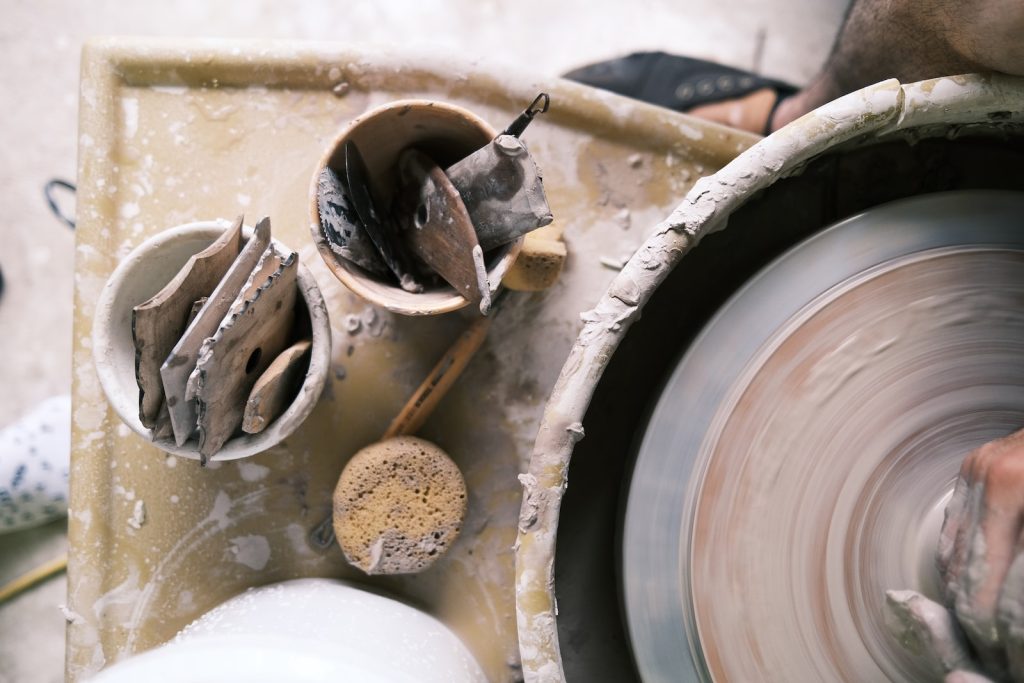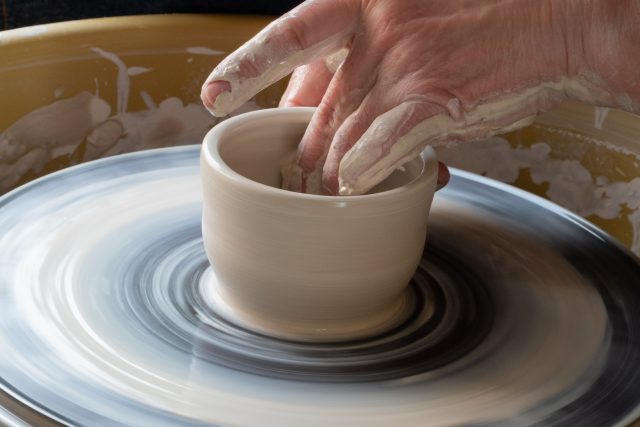Pottery is a creative and therapeutic art form that has been around for thousands of years. It is a great way to express yourself, connect with your emotions, and find inner peace. For those interested in exploring the world of ceramics, making your own pottery can be an empowering and calming experience.
What is Pottery for Therapy?
Pottery for therapy is becoming increasingly popular as a therapeutic technique. It is a creative and tactile way to express emotion and explore personal issues. Pottery can be an effective tool in helping individuals to reduce stress, anxiety, and depression while developing a sense of self-awareness. The process of creating something with clay is calming, allowing individuals the freedom to explore their own emotions through art. With pottery for therapy, there are no rules or guidelines; participants have complete autonomy over their creations and can use this time to reflect on their inner thoughts and feelings without judgment. This form of art has been found to help individuals get into a relaxed state which encourages healing and growth. Not only does this type of therapy provide an opportunity for self-expression, but it also helps build physical strength and promote creativity.
Benefits of Creative Expression
Not only does pottery offer an outlet for creativity, but it also provides a range of other benefits. Pottery can be incredibly therapeutic, from reducing stress and anxiety to improving mental health. Pottery encourages the development of fine motor skills as well as problem-solving abilities. It helps foster self-confidence by allowing individuals to create something tangible with their hands. Some may even find that working with clay leads to emotional catharsis and inner peace. Furthermore, potters gain increased patience and focus through this process which can help them in many areas of life beyond just art. Additionally, pottery provides an opportunity for socialization in a group setting or workshop environment where participants can share knowledge and work together on collaborative projects.
Tools and Materials Needed

Creating pottery is a rewarding and often tricky craft. In order to make beautiful, functional pieces of art, you need the right tools and materials. Having the correct supplies can help turn your dreams into reality and get you off to a great start on the path toward becoming a potter. The foundation of any pottery workshop is clay. Clay comes in wide different varieties, and each type offers its own unique properties when it comes to forming shapes and textures. Knowing which clay best suits your needs will give you an edge when creating your works of art. Additionally, you will need glazes, underglazes, slips, and engobes, as well as various brushes for painting or waxing the surface of your workpiece.
Techniques for Creating Ceramics
Ceramics are beautiful art pieces that have been crafted for centuries. From ancient civilizations to modern-day artists, creating ceramics is a creative and rewarding pursuit. Whether you’re interested in learning the basics of pottery or taking your skills to the next level, you can use various techniques when making ceramics. One popular technique is wheel throwing. This method uses a wheel to shape clay into desired shapes quickly. A skilled craftsman can then use tools such as knives and scrapers to refine their piece until it’s perfect. Another popular method for creating ceramics is hand-building with slab or coil construction. This technique uses pieces of clay cut from a rolled-out slab or coiled strands of clay that are placed together and then shaped by hand.
Step-by-Step Guide to Making a Piece
Once you have all the materials you need to make pottery, it’s time to get started. First, knead the clay until it is soft and pliable enough to work with. You can use your hands or a rolling pin. Once the clay is malleable, roll it out into a sheet of equal thickness. The goal is to create a uniform shape with even edges to make the piece look symmetrical when finished.
Next, cut out your desired shape from the clay sheet using cookie cutters or other tools, such as knives and scissors, depending on your design type. If necessary, add details by sculpting small details into the surface with modeling tools or your fingers. If there are any tiny holes in your pottery piece, fill them in with pieces of leftover clay, so they don’t leave gaps after firing and glazing.
Finally, if needed, attach two pieces together by dampening their edges and pressing them together firmly but lightly so that they don’t break apart during the firing and glazing processes later on down the line. After completing this step, let your pottery dry completely before moving on to the glazing and firing processes, giving your piece its final look!
Tips for Successful Crafting
Organizing your work area is essential to successful crafting. Ensure you have the necessary tools, such as rolling pins and cutters, ready to access them quickly. Planning out what type of clay you want to use and how much of it you need before beginning your project is important. Having a clear idea of the outcome will help guide your craft and make it easier to achieve success.
Another tip for successful crafting is to take breaks in-between projects or pieces. This gives you time to step away from work, think about potential solutions, and come back with new ideas or techniques that could help improve the final product. Additionally, taking breaks can help prevent fatigue from setting in, leading to mistakes or unsatisfactory results due to a lack of concentration or focus.
Lastly, be patient and enjoy yourself! Crafting should be an enjoyable experience; if something isn’t going right, don’t get frustrated. Take a break and try again after reflecting on what went wrong the first time. Remember that it takes practice and patience in order for any craft project to turn out great!
Conclusion: The Therapeutic Power of Pottery
The therapeutic power of pottery can be seen in the transformation that takes place from a lump of clay to a finely finished piece. Working with clay stimulates creativity and uses one’s hands to craft something beautiful, allowing for an escape from daily life. The repetitive motion of kneading, shaping, and smoothing out the clay is also known to reduce stress and anxiety. This practice has been used in educational settings and medical facilities such as hospitals and clinics, where it serves to help people focus on the present moment while providing some artistic expression.
Moreover, pottery can provide a creative outlet for those dealing with mental health issues such as depression or PTSD. Working on a project allows you to use your energy constructively while using your creative skills to express yourself through art. It can also help reconnect individuals with their natural environment by engaging other senses, such as smell or touch sensations found when dealing with clay or glaze materials that come directly from nature. Working with pottery provides an opportunity for self-expression that does not require any prior skill level nor expensive tools – just basic supplies like air dry or ceramic clays and carving tools – making it accessible for anyone regardless of age or background.






























